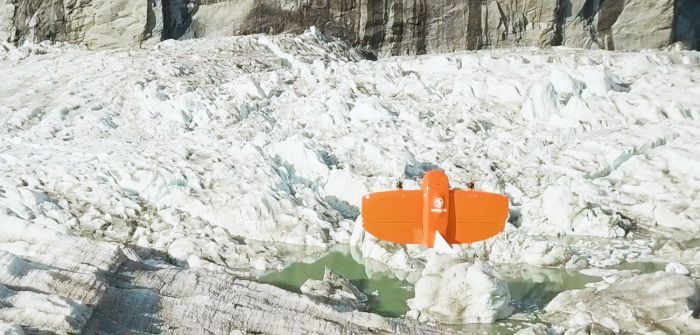Climate researchers in Alaska are using drones to help track ice and water levels in the Suicide Basin glacial lake.
The team, led by Gabriel Wolken, research professor at the University of Alaska Fairbanks Climate Adaptation Science Center, is working to visualize and predict seasonal flux at the glacial lake. It looks at how water interacts with the Mendenhall Glacier, which was once connected to Suicide Glacier before rising temperatures separated them.
When basin waters rise to a point, Mendenhall Glacier can no longer hold them and the entire basin drains, causing flash floods.
The team is using orthophoto and digital elevation models from a WingtraOne drone to assess changes to water and ice levels at Suicide Basin.
Wolken said, “Alaska is a big place. There’s virtually nothing we address that we consider small here. So, if it’s going to be a drone, we have to have something that can actually fly for a long time, fly high enough to be able to handle the complex terrain that we’re constantly dealing with and provide the resolution that’s required for the analyses we’re doing.”
Flash floods in the Suicide Basin began in 2011. Infrastructure at risk of damage includes a vital road bridge.
Wolken added, “This is the only road that connects residents on the north side to hospitals and other vital facilities, so if this bridge were impacted it would cause some very serious issues for a lot of people.”
Drone manufacturer Wingtra has released a video to demonstrate the work – click here to view.



